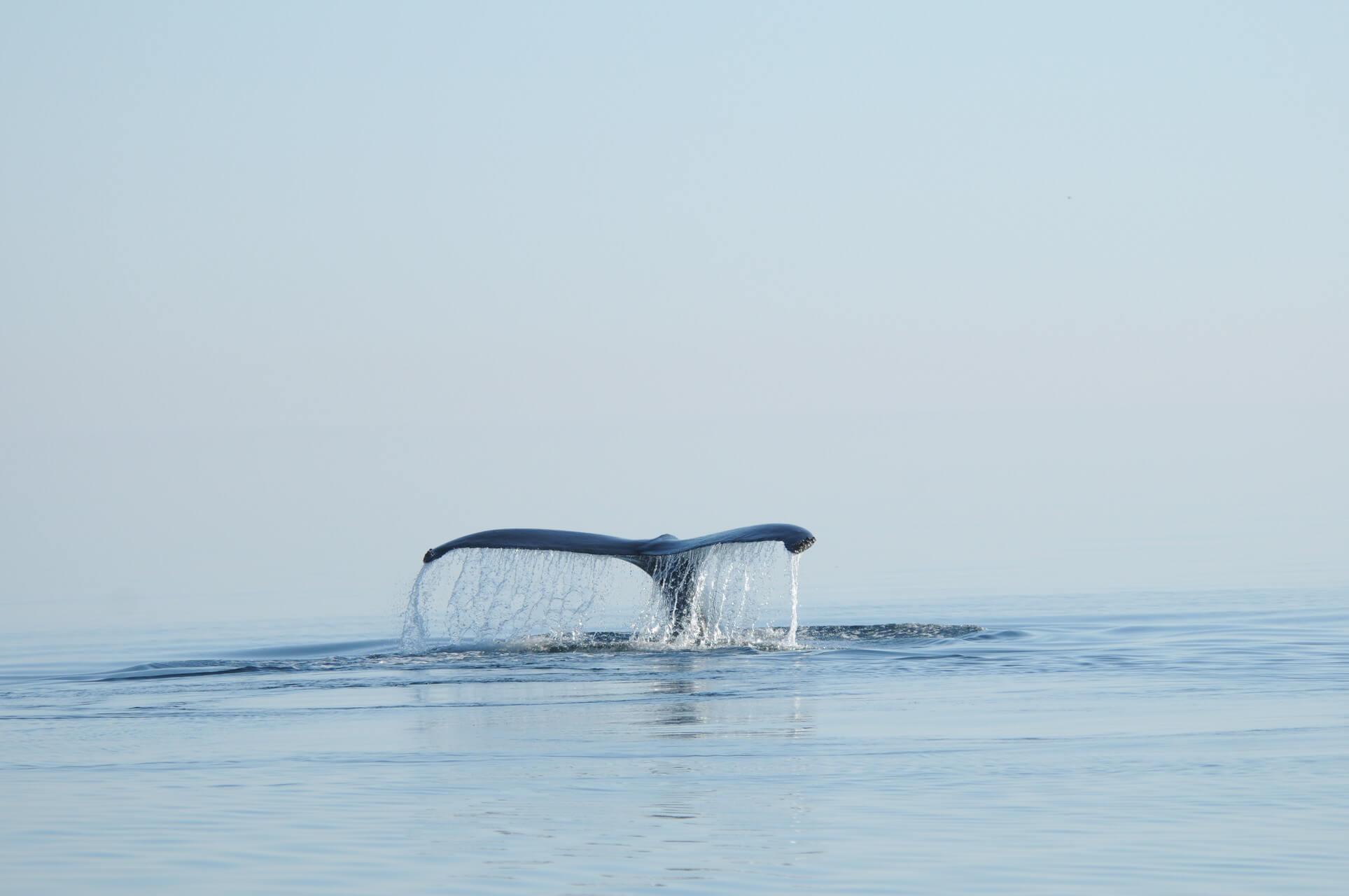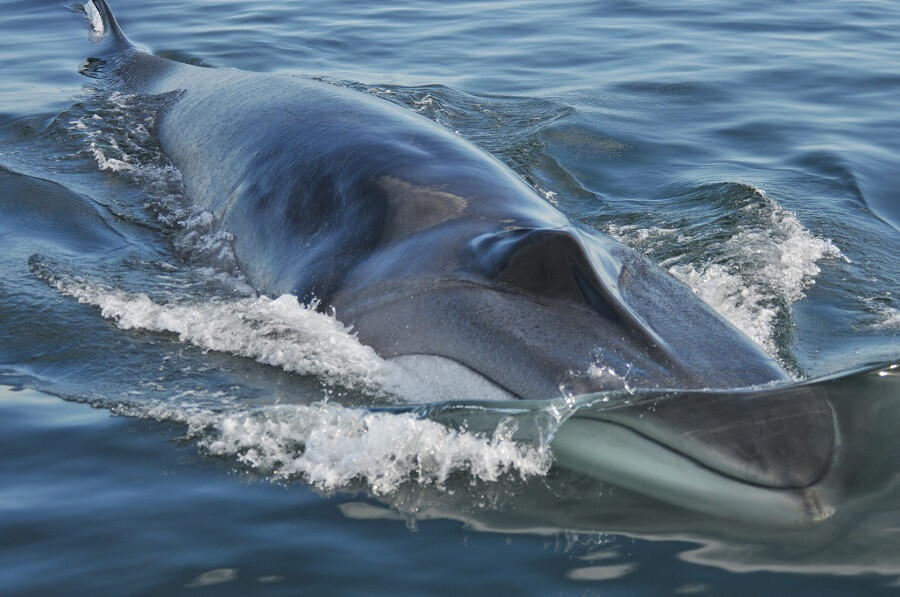Every year, the whales of the St. Lawrence travel thousands of kilometres between Quebec and their wintering grounds. A humpback whale can travel up to 5,500 kilometres to reach its breeding range in the Caribbean after gorging itself in our waters all summer long. But what drives whales to brave the high seas like this? This is a question that has long fascinated both the general public and the research community. Several studies have attempted to shed light on this phenomenon and three main conclusions emerge. Depending on the species, whales migrate for reasons related to reproduction, feeding or, more surprisingly, moulting.
Shelter and warmth
One of the explanations often given for whale migration has to do with calving and the raising of young. Compared to an adult, a calf faces more challenges and threats in its natural habitat. For example, the young of many cetacean species are born with a much thinner layer of blubber than adults. It is more difficult for them to effectively thermoregulate and therefore to survive in inhospitable higher latitude regions. This is why the humpbacks that visit the St. Lawrence give birth in the warm Caribbean rather than in the frigid waters of Quebec.
In addition to providing a favourable environment for their young, females also seek to ensure their offspring’s safety. A calf is particularly vulnerable to attacks by predators such as killer whales or certain species of sharks. This is why some cetaceans, including the grey whale, will instead migrate to refuges that are certainly warm, but more importantly, safe.
In search of the best buffet in town
Another reason whales migrate is the availability of food resources, which varies with the seasons. In summer, several species venture to higher latitudes in search of nutrient-rich foraging areas. With the onset of winter, prey become scarce in these regions and the whales therefore move to lower latitudes. This cycle repeats itself every year.
However, if a given summer range does not adequately meet the nutritional needs of the whales that frequent it, some individuals may refrain from migrating. This great annual marathon is very demanding and requires excellent preparation. If prey are not widely available, the energy reserves of some individuals could be insufficient to undertake the journey. Tracking whales that “skip” a migration could potentially serve as an indicator of ecosystem health, particularly in the case of humpbacks.
To migrate... or not!
Cetaceans’ migratory habits vary from one species to another and even within the same species. For example, in sperm whales, migration periods and patterns are relatively irregular and only involve males. In humpbacks, young males might “decide” not to migrate, not for a lack of energy reserves, but because they would stand little chance of mating in their winter grounds due to fierce competition with their older peers. As another example, some Pacific fin whales may not always need to migrate: California waters are usually productive enough to meet their needs year-round.
Exfoliating treatment
Recent studies have revealed a previously unsuspected motivation behind whale migration: moulting. Some cetacean species, including killer whales, humpback whales and grey whales, moult when they reach warm, tropical regions after feeding in cold waters for part of the year.
This phenomenon might be explained by the same mechanism that allows whales to maintain their body temperature. In polar climates, blood circulation is reduced in the outermost layers of skin, which helps minimize heat loss. Skin cells go dormant and stop renewing themselves. The moult is therefore altered. Once the whales arrive in their wintering grounds, the warmer waters boost the metabolism of their skin cells and moulting can resume. In addition to ridding the animals of their dead skin, this exfoliating treatment is also believed to help them shed colonies of diatoms, microscopic algae that accumulate on their skin over time.
Made possible in particular to drones and satellites, this recent discovery proves once again that when it comes to whales, we learn more every year. If in the past we imagined the comings and goings of cetaceans in the ocean as a metronome punctuated by food and reproductive needs, we are now beginning to realize that in reality, these patterns might be much more subtle.







